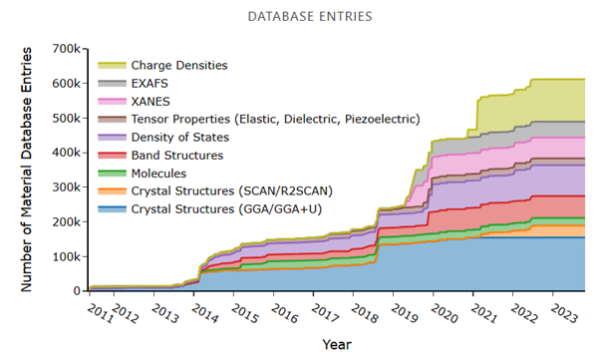Computational Approaches to Fast-Track Material Development

Materials informatics integrates the principles of computation and data-driven science.
The future of material research is increasingly changing toward digitization, which promises advantages but requires significant work and adaptability. While initial trends emerge, development varies between material classes due to variations in synthesis, production, analysis, and modeling techniques.
You can also read: AI for Enhanced Materials Development and Manufacturing
Programs like the Materials Genome Initiative and the Materials Project exemplify collective efforts to democratize scientific knowledge. By leveraging supercomputing and quantum mechanical theory, these endeavors aim to compute the properties of all known inorganic materials, laying the groundwork for the design of tomorrow’s innovations.
The Materials Project in Action
The Materials Project is a multi-institutional and international collaboration dedicated to computing the properties of all inorganic materials. Its purpose is to enable materials researchers around the world by providing free access to data and analysis techniques.
Today, the platform has 154,718 registered materials, 172,874 molecules, over 460,000 users, and more than 42,000 citations.

Number of database entries in The Materials Project per year. Courtesy of Materials Project – Home.
Number of database entries in The Materials Project per year. Courtesy of Materials Project – Home
The initiative’s goal is to accelerate the discovery of new materials by harnessing computer power, hence expediting the research process.
Leveraging supercomputing clusters at national laboratories like Lawrence Berkeley National Laboratory’s NERSC Scientific Computing Center and others such as Oak Ridge’s OLCF and San Diego’s SDSC, computations, data, and algorithms operate at unparalleled speed. This enables predictive modeling of material properties, leading to the discovery of new battery materials, transparent conducting oxides, and thermoelectric materials, accelerating advancements in materials science.
Materials Genome Initiative

Graphic Simulation of the 250,000 nano HUB users worldwide. Courtesy of 2014 MGI Strategic Plan.
The Materials Genome Initiative (MGI), aims to discover the “materials genome,” which will drive innovation in social well-being. Consequently, the envisioned future includes flexible biosensors, recyclable plastics, and sophisticated superconducting materials, among other things, bringing in a new era of technological possibilities. By creating large datasets, researchers collaborate across disciplines to find material properties, significantly decreasing the period for new material deployment.
The Initiative has had a significant impact worldwide on crucial developments such as accurate molecular structure deduction, the discovery of polar metals, and the research of OLED compounds.
Integration as Objective No 1
Objective No. 1 of the Materials Genome Initiative (MGI) project aims to address gaps in computational tools by identifying and bridging current gaps that hinder accessibility for stakeholders across the materials development continuum.
This initiative aims to enhance the national computational framework and foster the development of community codes. It integrates these methods into commercial applications to broaden their impact. The program seeks to increase experimental tool access by developing strategies that expand the availability of synthesis and processing tools for various material classes. It also involves implementing advanced multimodal characterization tools.
Furthermore, the effort focuses on eliminating access barriers for diverse user communities. This includes support for historically black colleges, universities, and other minority-serving institutions, promoting broader inclusivity.
